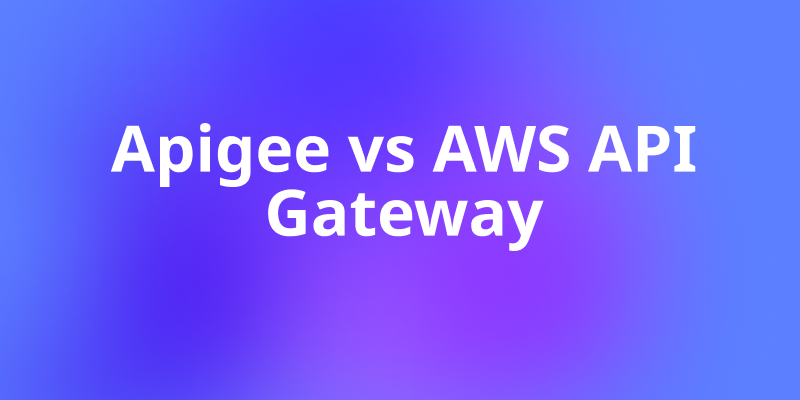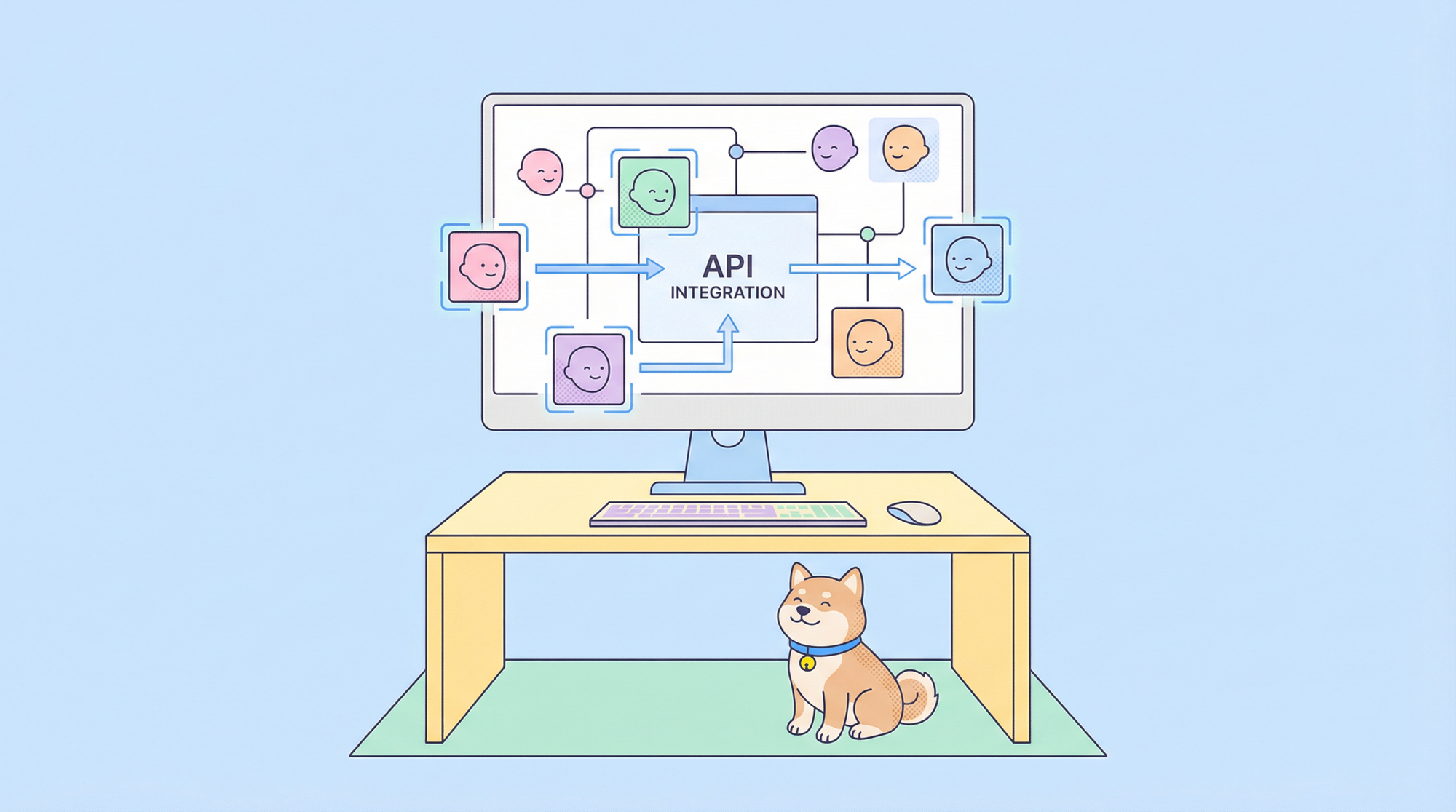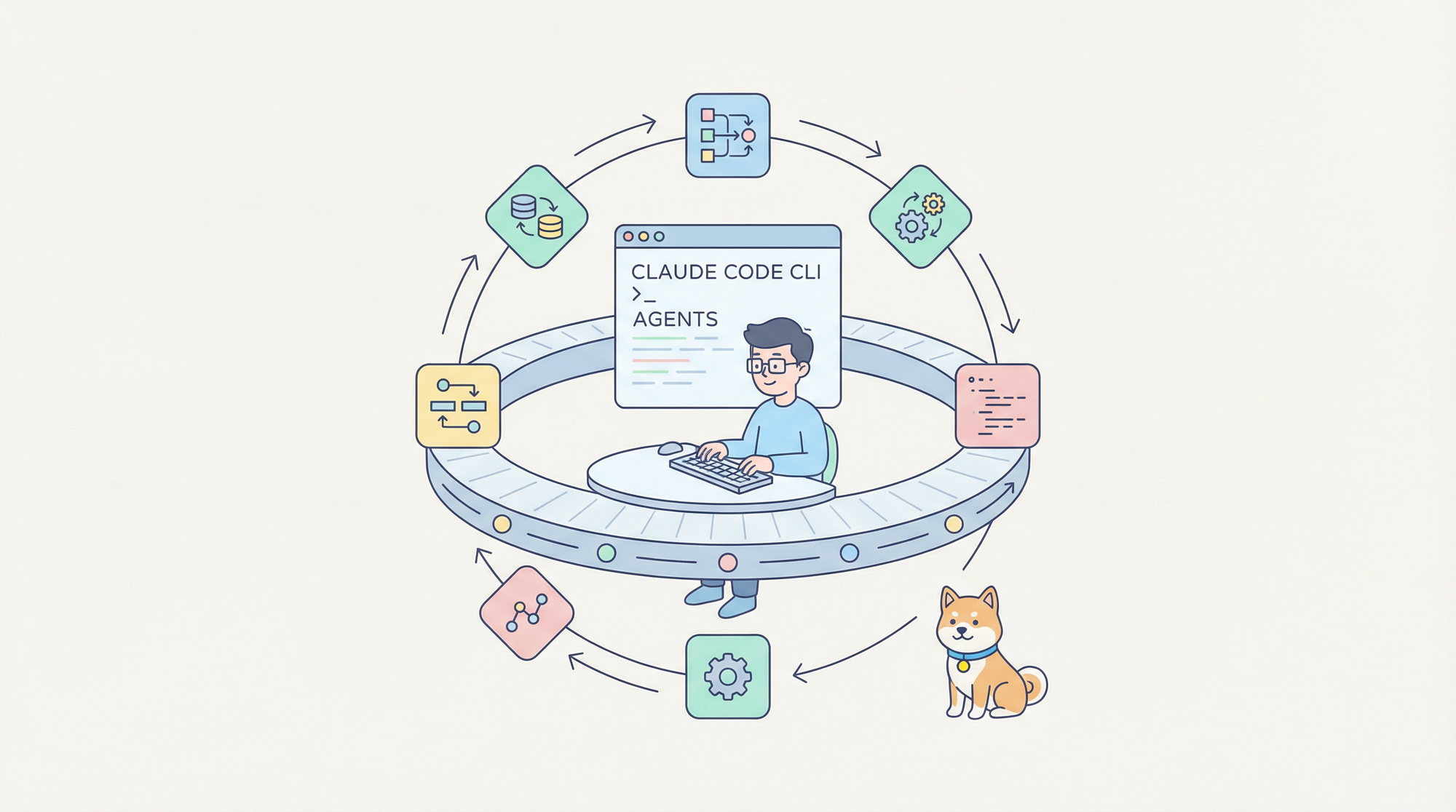In today’s rapidly evolving digital ecosystem, robust API management is no longer a luxury; it’s a necessity. Whether you’re building consumer-facing mobile apps, orchestrating microservices, or integrating with third-party systems, choosing the right API management platform can make or break your project. When it comes to managing APIs at scale, two names pop up repeatedly: Apigee and AWS API Gateway.
Apigee and AWS API Gateway stand out as two of the most popular solutions, each offering powerful features, flexible deployment options, and enterprise-grade security. Whether you’re a cloud-native startup or a massive enterprise with a web of microservices, choosing between them can be tricky. But ultimately, which one is the better fit for your organization?
Both platforms promise powerful API management, security, and scalability. But and this is important, they come from different worlds. Apigee is all about full lifecycle API management, while AWS API Gateway is laser-focused on API hosting and routing inside the AWS ecosystem.
In this blog post, we’ll dive deep into Apigee vs AWS API Gateway, exploring their feature sets, pricing, performance, and real-world use cases. Along the way, we’ll sprinkle in expert insights, practical tips, and honest comparisons to help you make an informed decision.
Want an integrated, All-in-One platform for your Developer Team to work together with maximum productivity?
Apidog delivers all your demands, and replaces Postman at a much more affordable price!
What Is API Management?
API management refers to the processes, tools, and practices involved in creating, publishing, securing, monitoring, and analyzing APIs in a scalable environment. An API management platform typically provides:
- A gateway that enforces policies (authentication, rate limiting, caching)
- Developer portals for onboarding and self-service API consumption
- Analytics dashboards to track usage, performance, and errors
- Security features including OAuth, JWT, API keys, and encryption
- Design and testing tools for prototyping and mocking APIs
- Lifecycle management for versioning, deprecation, and routing
By centralizing these capabilities, an API management solution helps organizations deliver reliable, secure, and high-performing APIs while reducing operational overhead.
Apigee
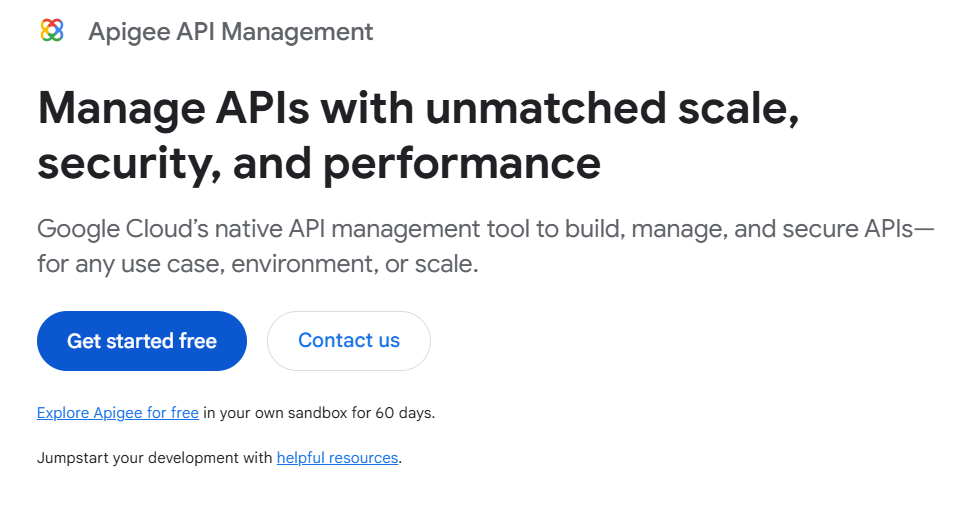
Acquired by Google in 2016, Apigee has long been recognized as a leader in the API management space. It offers both a cloud-hosted Apigee Edge version and an on-premises Apigee Edge Private Cloud deployment. Apigee’s strength lies in its comprehensive feature set, enterprise-grade security, and advanced analytics capabilities. It covers the entire API lifecycle from design, development, and deployment to security, monitoring, and monetization.
Key Components
- API Proxy: Lets you abstract and secure backend services.
- Edge Microgateway: Lightweight gateway for microservices.
- Developer Portal: Customizable SaaS portal for API documentation and subscription management.
- API Analytics: Detailed dashboards showcasing traffic, latency, errors, and developer behavior.
- Monetization: Tools for packaging APIs as products and charging per use.
- Policy Framework: Over 30 built-in policies for security, mediation, transformation, and traffic management.
Supported Protocols
- RESTful APIs (JSON/HTTP)
- SOAP with XML-to-JSON transformations
- gRPC (via byte streams)
- GraphQL (with policy-based proxy)
AWS API Gateway
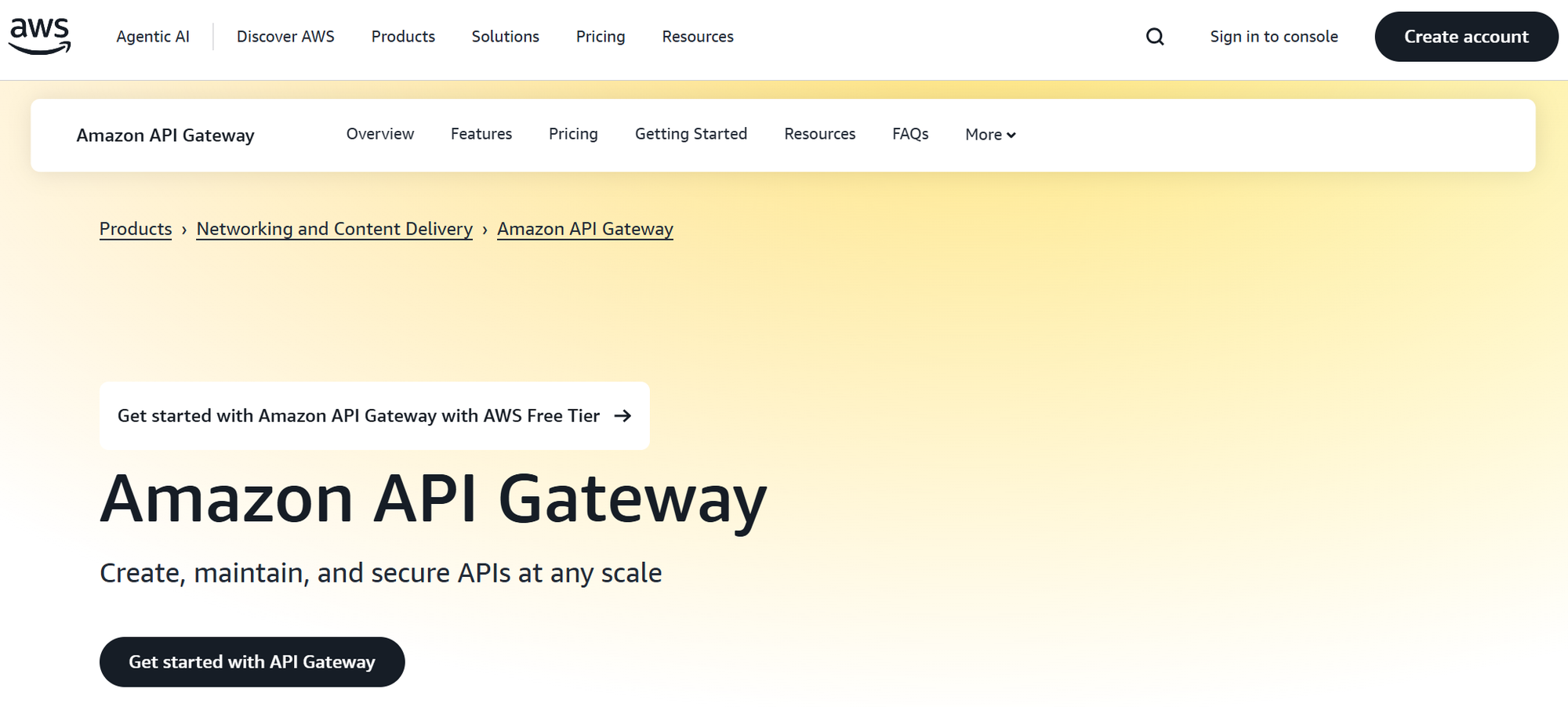
Launched in 2015, AWS API Gateway is Amazon’s fully managed service for creating, publishing, securing, and monitoring APIs at any scale. As part of the AWS(Amazon Web Services) ecosystem, it integrates tightly with other AWS services such as Lambda, CloudWatch, IAM, and Cognito, making it a natural choice for organizations already invested in AWS.
Key Components
- API Types: REST APIs, HTTP APIs, and WebSocket APIs.
- Integration Options: AWS Lambda, HTTP endpoints, AWS services (via service integrations), VPC links.
- Security: AWS IAM, Cognito user pools, Lambda authorizers, JWT validation.
- Throttling and Quotas: Configurable per stage or per API key.
- Caching: In-memory caching at the regional level.
- Monitoring: CloudWatch metrics, X-Ray tracing, and logging.
Supported Protocols
- HTTP/HTTPS REST
- WebSocket
- HTTP/2 (for HTTP APIs)
- Native support for binary payloads
Core Feature Comparison
Below is a detailed comparison of Apigee vs AWS API Gateway across essential API management capabilities.
| Feature | Apigee Edge | AWS API Gateway |
|---|---|---|
| API Design & Prototyping | Integrated API Proxy Designer + Swagger/OpenAPI import | OpenAPI import/export; limited in-console editing |
| Security & Auth | OAuth 2.0, JWT, API keys, Spike Arrest, IP Whitelisting | IAM, Cognito, Lambda authorizers, JWT validation |
| Traffic Management | Quota policies, Spike Arrest, Caching at proxy level | Throttling, quotas per API key, regional caching |
| Analytics & Monitoring | Rich dashboards, drill-down drill-through analytics | CloudWatch metrics, X-Ray distributed tracing, dashboards via CloudWatch Insights |
| Developer Portal | Fully customizable SaaS portal with analytics | AWS Marketplace + self-built static sites on S3 |
| Monetization | Built-in API product packaging, revenue reporting | No native monetization; requires custom implementation via AWS Lambda/Marketplace |
| Deployment Options | SaaS, Private Cloud, Hybrid | Fully managed regional, edge-optimized via CloudFront |
| GraphQL & gRPC Support | Yes (proxy policies) | GraphQL via AppSync; gRPC not directly supported |
| Lifecycle Management | Versioning, revisions, environments (Dev/Test/Prod) | Stages (Dev/Test/Prod), versioning via versions and aliases |
| Pricing Model | Based on traffic volume and features; tiered plans | Pay-per-request + data transfer + cache memory charges |
Both tools can manage APIs, but they have different philosophies. Apigee is the big-picture API strategy tool. AWS API Gateway is the API execution engine inside AWS.
Deployment Models and Flexibility
Apigee
- SaaS (Apigee Edge in Google Cloud): Ideal for organizations that prefer a turnkey solution without infrastructure management.
- Private Cloud (On-Premises or GCP/Azure/AWS VMs): Suited for industries with strict compliance or data residency requirements.
- Hybrid: Combine cloud management plane with on-premises runtime for balanced control and agility.
AWS API Gateway
- Fully Managed Regional: Deploy APIs in specific AWS Regions for low latency to local users.
- Edge-Optimized: Automatically leverage CloudFront for global caching and routing.
- Private APIs: Accessible only within your VPC via PrivateLink for internal microservices.
In short, both platforms offer flexible deployment options. Apigee’s hybrid mode gives more architectural variety, while AWS API Gateway seamlessly fits into AWS’s global footprint.
Performance and Scalability
When it comes to high throughput and low latency, both Apigee and AWS API Gateway deliver robust performance:
- Apigee can handle tens of thousands of requests per second, especially when deployed in a scaled private cloud cluster. Its micro gateway option enables lightweight edge processing closer to services.
- AWS API Gateway provides out-of-the-box autoscaling with no provisioning required. Edge-optimized APIs benefit from CloudFront’s CDN network, reducing latency for global clients.
However, real-world performance often boils down to backend integration. For Lambda-backed REST APIs, AWS API Gateway adds minimal overhead, whereas Apigee’s policies may introduce extra processing time at the gateway layer.
Security and Compliance
With rising cyber threats and stringent regulations, security is a top priority for API management:
Apigee
- Built-in policies for OAuth2, JWT, two-way TLS, IP whitelisting, and threat protection.
- SOC 2, ISO 27001, HIPAA, GDPR compliance (in Google Cloud).
- Customer-managed keys via Cloud KMS or HSM.
AWS API Gateway
- Integrates with IAM for fine-grained permissions and AWS Shield for DDoS protection.
- Supports Cognito user pools for user authentication and custom Lambda authorizers for bespoke logic.
- Compliance certifications including FedRAMP, HIPAA, PCI DSS, and GDPR.
Both solutions meet high security standards, though Apigee’s extensive policy library and out-of-the-box threat protection can simplify compliance efforts.
Ease of Use and Learning Curve
Apigee
Apigee’s comprehensive feature set goes hand-in-hand with greater complexity. Teams may need several weeks to fully adopt the policy framework, developer portal customization, and analytics features.
AWS API Gateway
AWS API Gateway shines for AWS-centric developers. The in-console wizards, CloudFormation templates, and Terraform modules accelerate API creation. However, advanced features like request/response transformations and custom authorizers require familiarity with AWS Lambda and IAM.
In essence, Apigee offers more enterprise-level features at the cost of steeper learning, while AWS API Gateway provides quick startup for AWS-fluent teams.
Ecosystem and Integration
| Integration Category | Apigee | AWS API Gateway |
|---|---|---|
| Serverless | Edge Microgateway; Hybrid with Cloud Functions | AWS Lambda, Step Functions |
| Container & Kubernetes | Apigee Hybrid on GKE/Azure AKS/AWS EKS | Natively expose EKS/ECS services; AWS App Mesh |
| Monitoring | Apigee Analytics, Stackdriver, Grafana | CloudWatch, X-Ray, third-party via VPC/Lambda |
| CI/CD | Jenkins, GitLab, Cloud Build, scripted via management APIs | CodePipeline, CodeBuild, CDK, SAM |
| Third-Party APIs | Out-of-the-box SDKs, monetization via API products | AWS Marketplace integrations, custom integrations via Lambda |
| Developer Tools | Apidog, SwaggerHub, Postman | AWS CLI/SDKs, SAM CLI, Cloud9, Apidog |
Thanks to its Google Cloud heritage, Apigee integrates seamlessly with Kubernetes and managed serverless. AWS API Gateway, meanwhile, forms the backbone of AWS serverless architectures and leverages a broad suite of AWS developer tools.
Real-World Use Cases
Apigee
- Global Financial Services: A bank used Apigee to secure and manage APIs for mobile banking, compliance reporting, and third-party fintech integrations, benefiting from Apigee’s monetization features and policy-driven security.
- Telecommunications: A telco provider leveraged Apigee’s hybrid deployment to keep sensitive authentication on-premises while exposing APIs for partners via the cloud.
- Healthcare: With HIPAA requirements, a healthcare platform used Apigee’s two-way TLS and API analytics to ensure secure data exchange and real-time monitoring.
AWS API Gateway
- Event-Driven Microservices: A streaming application routed high-velocity events through AWS API Gateway to Lambda functions for real-time processing.
- IoT Backends: Devices authenticating via Cognito user pools and sending telemetry via HTTP APIs, with edge caching for intermittent connectivity.
- Serverless Web Applications: A startup built a fully serverless blog platform, using API Gateway HTTP APIs for CRUD operations against DynamoDB, all managed via AWS SAM.
Migration Considerations
If you’re migrating from one API gateway to another, consider:
- API Definitions: Exporting and transforming OpenAPI specs or Swagger definitions.
- Policies and Transformations: Reimplementing custom transformations, authentication flows, and error handling.
- Developer Portal: Rebuilding or migrating documentation, user accounts, and subscriptions.
- Analytics: Archiving existing data and setting up new dashboards.
- CI/CD Pipelines: Updating IaC templates and build scripts.
Tools like Apidog can assist in exporting API definitions, testing endpoints across environments, and validating request/response schemas—making migration smoother.
When to Choose Apigee
Opt for Apigee if you need:
- Advanced policy management and threat protection out of the box.
- Rich, customizable analytics dashboards.
- API monetization features to package and charge for API usage.
- Hybrid or on-premises deployment for regulatory compliance.
- Enterprise-grade support and SLA-backed uptime.
When to Choose AWS API Gateway
AWS API Gateway is ideal when:
- You’re deeply invested in the AWS ecosystem.
- You prefer pay-per-use pricing with no upfront commitment.
- You need rapid, serverless API deployments with minimal configuration.
- You want tight integration with AWS Lambda, IAM, and CloudWatch.
- You seek edge-optimized global performance via CloudFront.
Integrating Apidog into Your Workflow
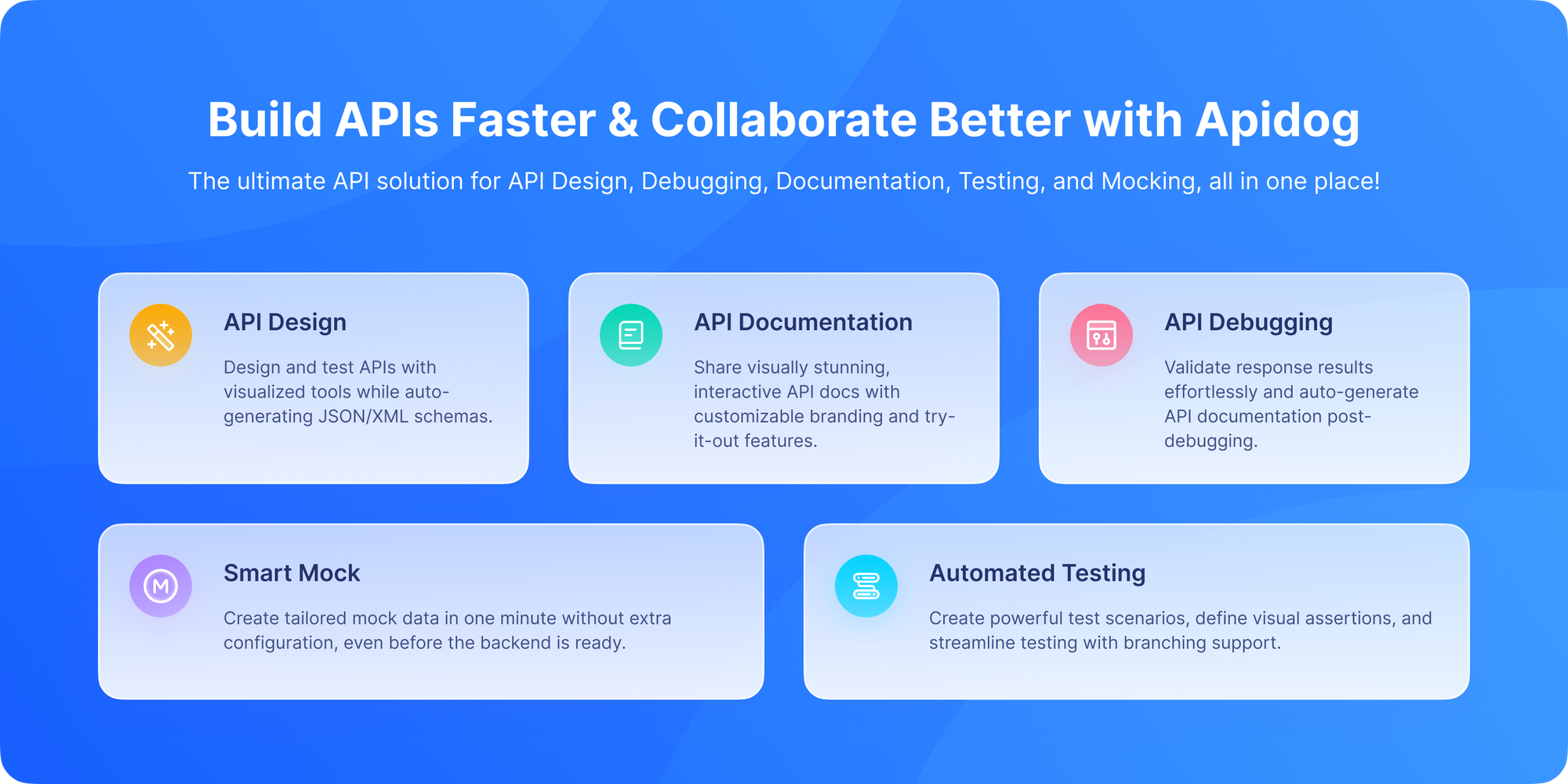
Whether you pick Apigee or AWS API Gateway, you still need a good way to design, test, and document APIs. Apidog is your all-in-one API collaboration companion:
- API Design: Import OpenAPI specs, mock endpoints, and share prototypes instantly.
- Testing & Validation: Create automated test suites, run them across environments, and track results.
- Documentation: Generate interactive API docs for your team and external developers.
- Monitoring: Integrate with gateway logs to surface metrics and health checks.
- Team Collaboration: Invite teammates, assign roles, and comment directly on API requests.
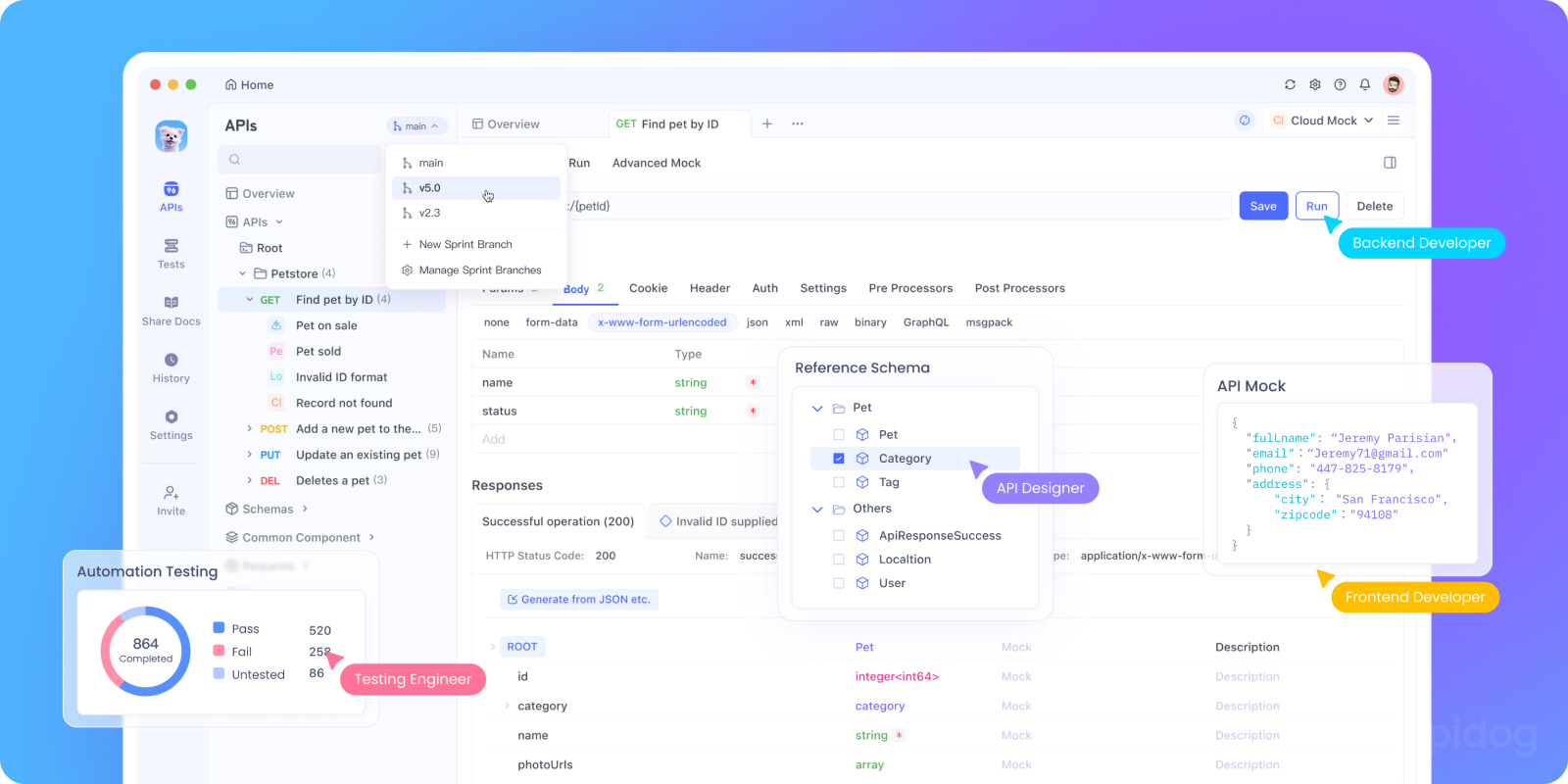
So instead of fiddling with raw JSON configs in AWS or Apigee, you can prototype and debug APIs faster. Don’t wait download Apidog for free today and revolutionize how you build, test, and document APIs!
Final Thoughts
In the Apigee vs AWS API Gateway showdown, both platforms deliver robust, enterprise-ready API management solutions. Apigee shines with advanced policy capabilities, hybrid flexibility, and deep analytics, making it a top choice for large organizations with stringent compliance needs. AWS API Gateway, on the other hand, excels within AWS’s serverless ecosystem, offering ease of use, pay-as-you-go pricing, and seamless integration with other AWS services.
If API management were cars:
- Apigee is a luxury SUV, fully loaded, versatile, and ready for long-haul enterprise journeys.
- AWS API Gateway is a sports coupe, fast, agile, and perfect for AWS-native roads.
Ultimately, your decision hinges on your existing infrastructure, governance requirements, and long-term API strategy. By carefully weighing the strengths and trade-offs outlined above and leveraging tools like Apidog to accelerate your API lifecycle you’ll be well-equipped to choose the platform that propels your digital transformation forward. And remember: whichever you pick, Apidog can be your API workshop, giving you the tools to design, test, and debug before going live.
